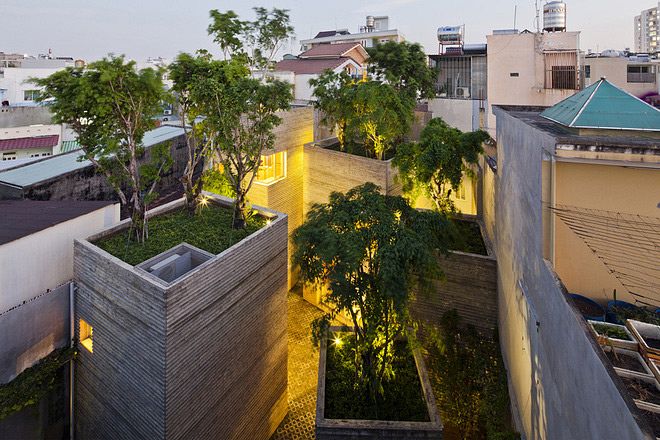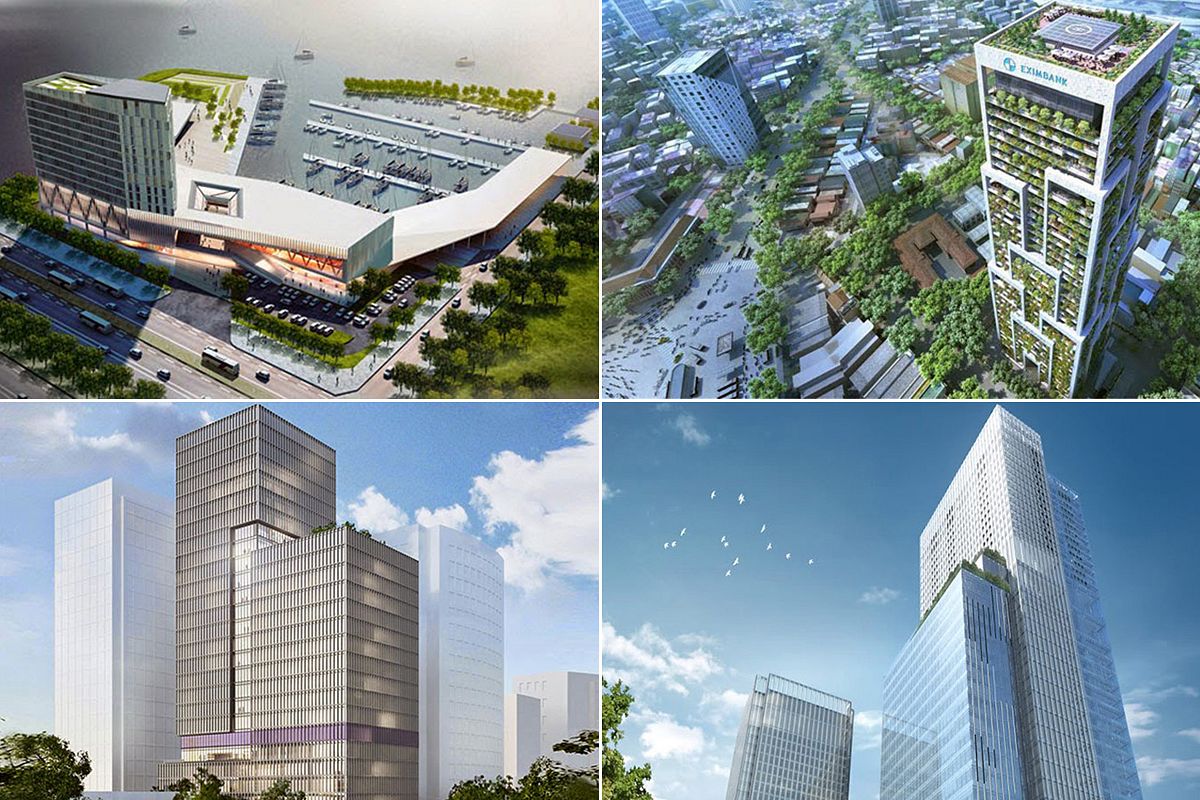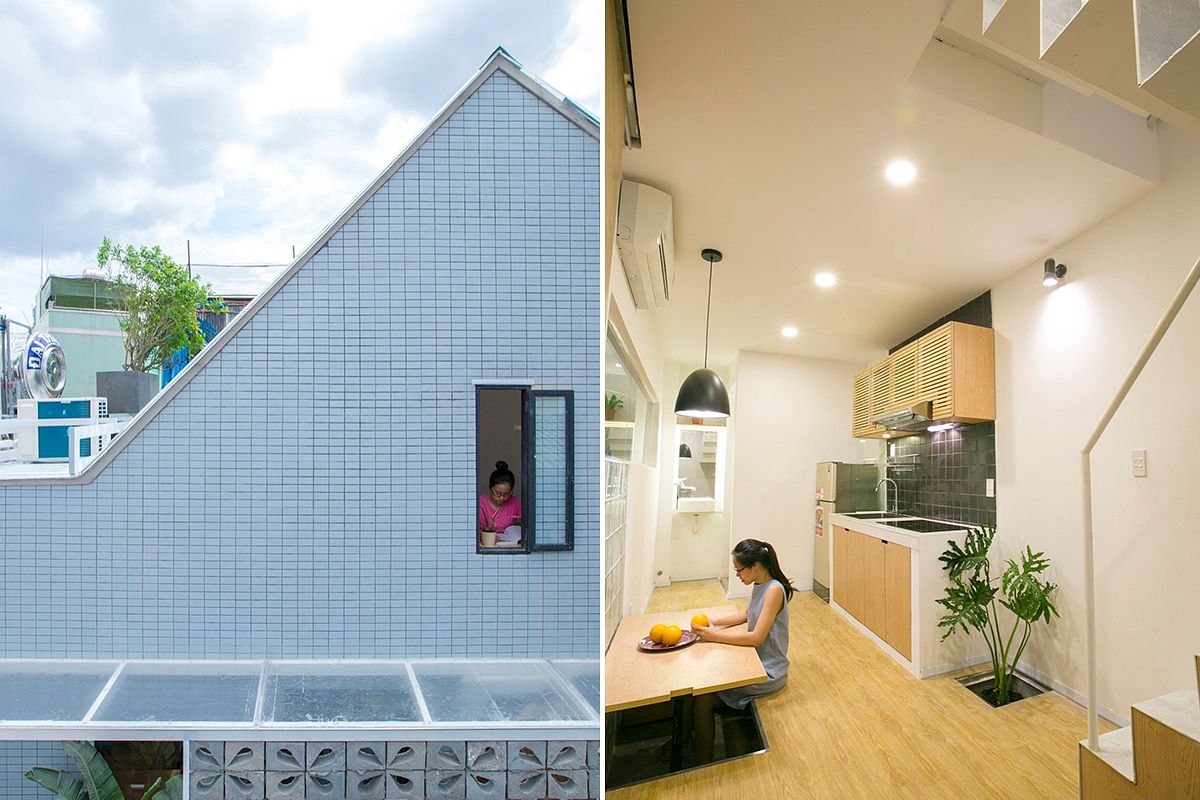Saigoneer is proud to be the media sponsor of the Hà Nội: CAPITAL City photo book. Over the course of the next few weeks, we’ll be giving you an overview of the book's fantastic photos and stories. Today we’ll take a closer look at the first chapter: The Capital City From Above.
The book, edited by Michael Waibel, was produced with the support of the Goethe Institut, and funding from Audi Vietnam as diamond sponsor. It is split into 6 chapters, each covering a major theme related to Hanoi's rapid urban development.
The photos in this chapter were taken from the roofs of approximately 25 high-rise buildings and from six aerial flights across the city.

Photo by Philippe Le.
Compared to Ho Chi Minh City, the skyline of Hanoi’s city centre still appears modest. Fortunately, the ever increasing emergence of high-rise buildings is mostly happening on the outskirts of the city. The charm of the historic center can only be preserved if Hanoi is following the role model of Paris, where high-rise buildings have been refused in the city centre for the last 50 years.

Photo by Philippe Le.
The most striking feature is the extreme density of the urban fabric in almost every part of the capital city. Even within Hoan Kiem District, with its wide French colonial boulevards, the densely packed buildings, otherwise hidden behind the facades at street level, are immediately apparent from this elevated perspective.

Photo by Michael Waibel.
The high angle views also reveal what is called ‘socio-spatial fragmentation’ in the academic community and can be understood as the immediate proximity of striking contrasts: high-rise and low-rise, high-density and low-density, planned and informal, modern and traditional, etc.

Hanoi seen from the Landmark 72 Tower. Photo via Michael Waibel.
Taking photos from the top of a skyscraper was often an adventure. The most common strategy was to use an often dusty and dark emergency staircase to reach the roof platform. On Kinh Do Tower, however, I found myself locked out on the roof terrace due to a trap door shutting behind me... A few times though I, thankfully, received official support from building management boards, such as in the case of the Melia Hanoi Hotel, the JW Marriott Hotel Hanoi, the Lotte Center Hanoi (65 floors) and the Landmark 72 Tower, Vietnam’s highest building (350 m, 72 floors). On the latter occasion, I was even allowed to take photos from the helipad platform, which offered a spectacular view to all cardinal points.

Hanoi seen from the Landmark 72 Tower. Photo via Michael Waibel.
Some high angle photos were taken from a drone, or more precisely a quadrocopter. Philippe Lê, an architect, currently based in Hanoi and Abu Dhabi, contributed these images. He was able to shoot some spectacular - never seen before - views of Hanoi’s cityscape, for instance those of the Long Bien Bridge, of the West Lake and the Truc Bach Lake surroundings.
In Ho Chi Minh City, the book is available at all Artbook stores, at the War Remnants Museum and also at the international airport terminal. In Hanoi, the book is available at Infostone bookshop, at the larger shops of Hanoi Book Company, at Bookworm, at Golden Bookshop and the bookshop of Ho Chi Minh Museum.
Bibliographical Information:
Waibel, M. (ed.) (2015) Hà Nội: Capital City. Sách ảnh / Fotobuch / Photo Book. 1st edition. Fine Art Publishing House, Hanoi, Vietnam, 308 p. ISBN 978-604-78-1965-2.














